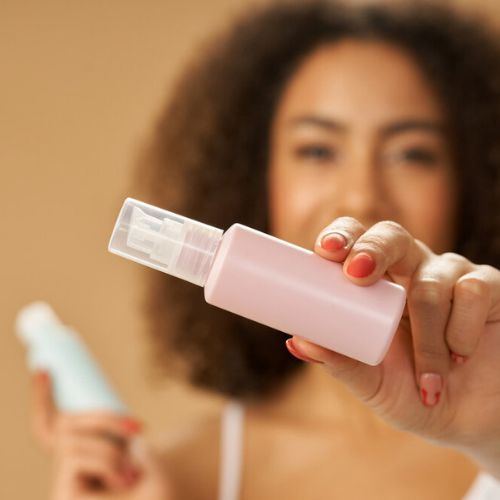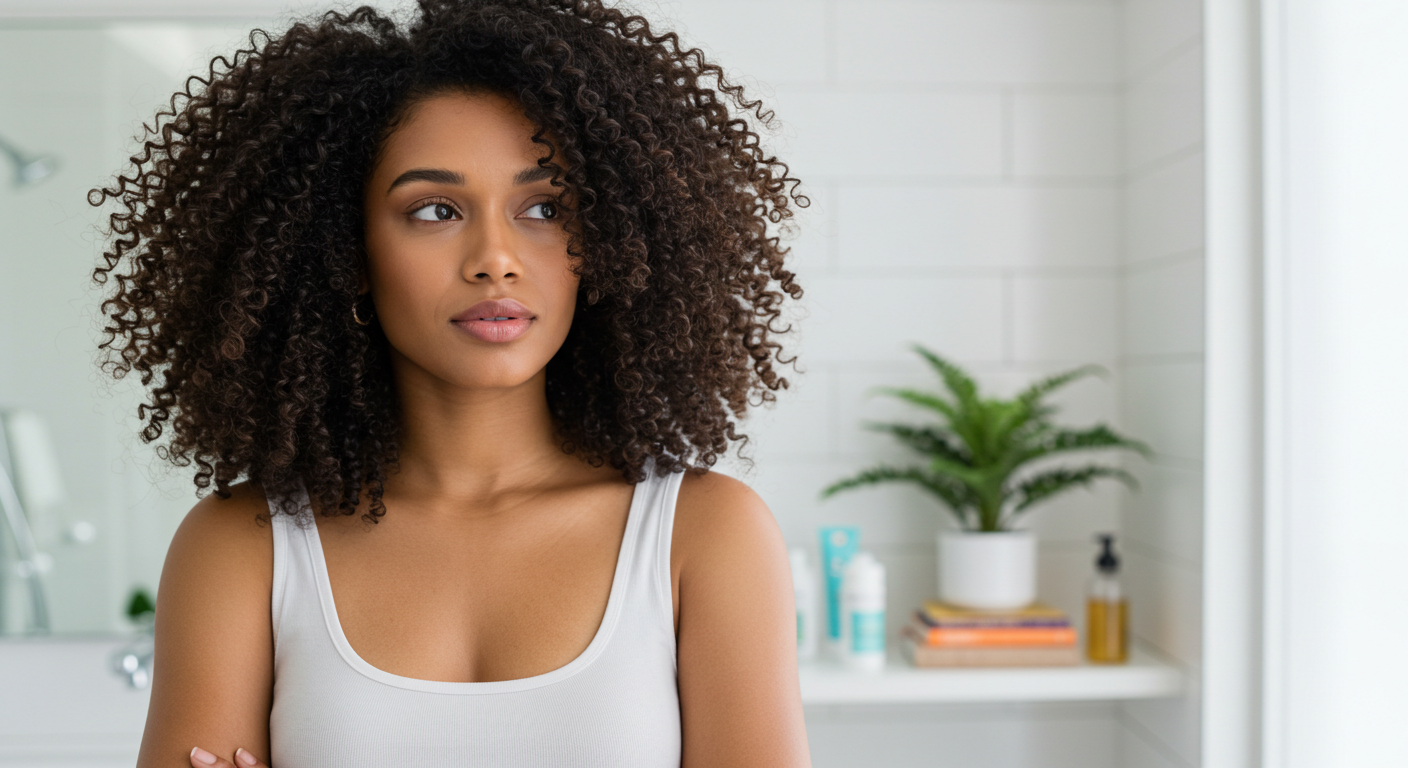We’ve all had those moments scrolling through Instagram, feeling envious of those perfect hair days. But before you resign yourself to perpetual bad hair, know that even the most enviable locks start with the basics.
Believe it or not, understanding hair bonds doesn’t require fancy products or a hefty price tag—it just takes a bit of knowledge. Hair bonds are essential elements that lay the foundation for any great hairstyle.
If you’re like me, you might not give much thought to hair bonds. However, they play a crucial role in achieving and maintaining healthy hair. In today’s blog, we’ll delve into the intricacies of hair bonds, discussing their types and importance in detail.
Stay tuned as we simplify the complexities of hair bonds, making it easier for you to grasp and apply to your hair care routine. And remember, I’ve collaborated with a seasoned hair scientist and cosmetic formulator, holding a PhD in Chemistry, to ensure accuracy and expertise in this topic.
Understanding the Three Types of Hair Bonds
Your hair’s structure relies on three types of bonds: disulfide, hydrogen, and salt. Each plays a crucial role in maintaining hair health and appearance.
Disulfide bonds, the strongest of the trio, determine your hair’s shape. When these bonds break, your hairstyle loses its structure, often resulting in frizz.
Hydrogen bonds, though less robust, are equally vital. They help retain moisture in your hair, promoting its overall health and appearance.
Lastly, salt bridges are temporary bonds formed between hair proteins. These bonds are susceptible to breakage from heat or chemical exposure, emphasizing the importance of using heat protectant products during styling.
Why Do Hair Bonds Matter?
Many things in our daily lives can cause hair bonds to break. Hair bonds are important for two main reasons: to protect the hair from damage and to keep the hair healthy. They determine the strength and elasticity of our hair.
When hair is damaged, the hair bonds are broken and the hair becomes weak. This can lead to further damage, such as split ends and breakage.
Chemical Bonding
Human hair is a protein fiber mainly composed of alpha – keratin which is a sulfur-rich protein and is a key player in defining the physical and chemical properties of hair.1-2
Just like all other proteins, keratin is a large organic polymer made by small monomers called amino acids.
Different amino acids combine via a condensation reaction to form keratin. Keratin structure is shaped by multiple chemical bonds.
“Chemical bonding” is a technical term in chemistry describing the interaction or linkage between chemical components, compounds, or groups.
Amino acids of keratin interact with each other via various types of chemical bonds to make a stable chemical structure.
These chemical bonds are largely important for hair’s mechanical strength, its physical and chemical properties, and its cosmetic features.3
Let’s look at some basic chemical bonds in hair structure and the important role they play in determining hair quality.
But first, a brief note about the structure of keratin before we get started.
Alpha Keratin

Keratin structure is made up of two strands of amino acids, and these two chains are connected by multiple chemical bonds. Imagine it as a wooden ladder having rungs.
The rungs connect the two bars of the ladder. Likewise, amino acids on two sides of the strand are connected. The whole keratin structure is then twisted like a helix.
So, what are the chemical bonds responsible to hold two amino acid strands of keratin together?
The chemical bonds in chemistry are characterized as:
- Covalent bond – further classified as peptide bond and disulfide bond
- Ionic Bond
- Hydrogen bonding
- Weak Van der Waals interactions
Peptide Bond
A peptide bond is a strong covalent bond formed by the condensation of an amino group of one amino acid and the carboxylic group of another amino acid.
When there is a lot of condensation for a large number amino acids, it leads to polymerization and results in a long chain keratin polymer.
The peptide bond is essential for the structure of the keratin molecule and plays a vital role in its biochemical properties.
Another chemical bond similar to the peptide bond is called the isopeptide bond.
The peptide bond is between two amino acids of the same strand, whereas the isopeptide bond is between two amino acids of two different strands.
Disulfide Bond
The disulfide bond as described by its name involves two sulfur groups. It is the inter-chain bonding (between two strands) between cystine amino acids.
This interaction can be visualized as the rungs of a ladder along with the chemical structure of keratin.
The disulfide bond is responsible for the mechanical stability and tensile strength of hair fiber.
The most powerful naturally-occurring bond in nature is the disulfide bond.
Disulphide and hydrogen bonds keep the protein structures of the hair shaft together.
Curly hair has more disulphide bonds than straight hair. The more disulfide bonding that takes place in the fiber, the curlier and kinkier the hair.
When hair is treated with a perm or relaxer, these disulphide bonds are altered to give hair a new shape. Only chemical agents can break these bonds.
All chemical treatments may alter the disulfide bond in a significant way.
During the hair bleaching and oxidation coloring process, hydrogen peroxide may oxidize the disulfide bond and form cystic acid, breaking the main backbone of the hair structure.
In alkaline treatments with sodium hydroxide (such as a relaxer), the disulfide bond is converted to a lanthionine bond resulting in a permanent chemical change, a process generally used in permanent hair straightening.
This fracturing of the disulfide bond leaves hair fragile, weak, highly porous, and vulnerable to breakage. Once disulfide bonds are broken they cannot be reformed.
Salt Linkages (Ionic Bonding)
Ionic bonds are formed between two oppositely charged groups. Amino acid is a unique molecule having one amino acid (positive charge) and carboxylic acid (negative charge) in the same molecular structure as shown below.

Opposite charges attract each other. In proteins, the positively charged amino group (H3N+) attracts the negatively charged carboxylate group (COO–).
This attraction is columbic ionic bonding also known as salt linkages.
These bonds are broken by pH changes in the hair in both acid and alkaline direction. Readjusting the hair’s pH will reform and stabilize these bonds.
When the hair’s pH changes in either the acid or alkaline direction, these bonds are broken. These connections can be restored and stabilized by adjusting the hair’s pH.
Hydrogen Bond
A hydrogen bond is an interaction between a hydrogen atom bonded to a highly electronegative atom such as nitrogen, or oxygen, of one molecule with the electronegative atom of the other molecule or a different part of the same molecule.
The two important instances of hydrogen bonding in the hair fiber are:
–O…H-O- and –O…H-N-
The dotted line shows hydrogen bonding between oxygen and hydrogen. It is a weak bond compared to disulfide or peptide bonds.
The most flexible bonds in hair care are hydrogen bonds. They are easily broken by water and heat, and they are the primary bond responsible for altering the hair’s overall shape.
For example, when hair is wet, the bonds are temporarily disrupted, allowing us to utilize the hair’s flexible hydrogen bonding structure to reshape it with greater definition.
The reason for hair frizzing and curls falling flat is hydrogen bonding.
Another example is when hair is styled with heat, the hydrogen bonds are broken and hair can be molded into a new shape.
Van der Waals Chemical Bonding
Van der Waals interactions (dipole interaction or Hydrophobic bonds) exist between non-polar groups of the polypeptide side chain.
They are important and provide mechanical strength to the hair fiber, especially in water-based treatments.
What Matters the Most?
Hair mechanical strength, quality, and health depend upon all of the above chemical bonds.
However, disulfide bonding is vital and the backbone of keratin structure. It is a strong chemical bond and therefore defines the mechanical strength of hair fiber.
It comes under attack by various active chemical agents during hair bleaching, coloring, perming, and straightening.
Moreover, the cuticle has more disulfide bonds than the cortex and thus is the first site of chemical action.
Breaking disulfide bonds leaves hair weak, porous, and frizzy. Therefore, hair needs to be extra protected and conditioned to minimize the adverse effects of hair treatments.
Conditioning is important as it can help to temporarily repair hair by filling in the gaps created by hair damage.
Hair conditioners usually contain active ingredients that can help to improve hair texture and protect hair from further damage.
The bottom line is that all hair bonds are important. But, the disulfide bond is the most important hair bond of all.
Key Points
Hair is made up of keratin protein. Protein is formed by the polymerization of amino acids.
Keratin structure is stabilized by various chemical bonds, e.g. peptide bond, disulfide bond, ionic bonds, and Van der Waals. The disulfide is the strongest and most important chemical bond in hair structure.
Chemical bonding stabilizes the structure of hair fiber, provides mechanical strength, and is essential for hair integrity.















